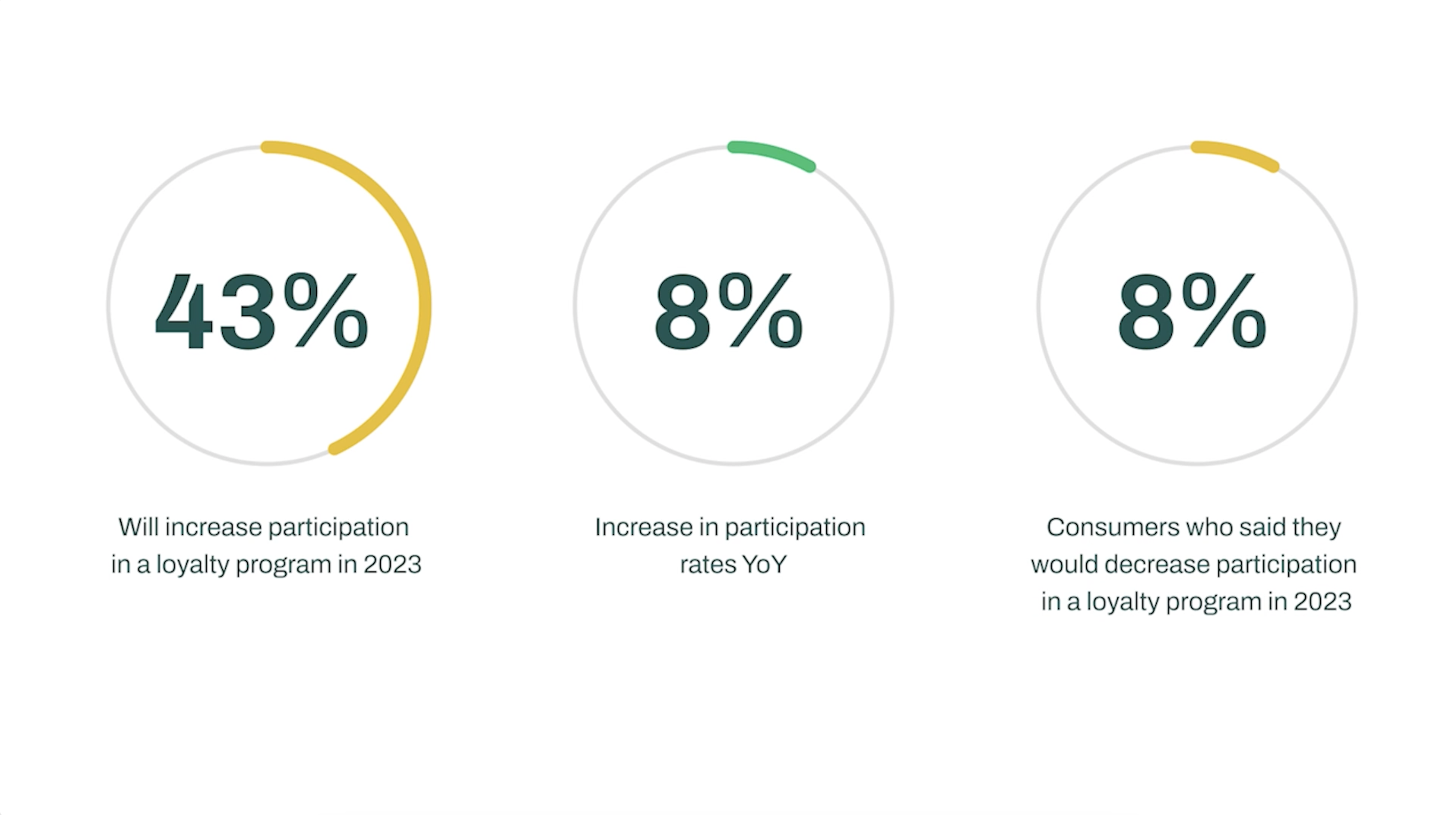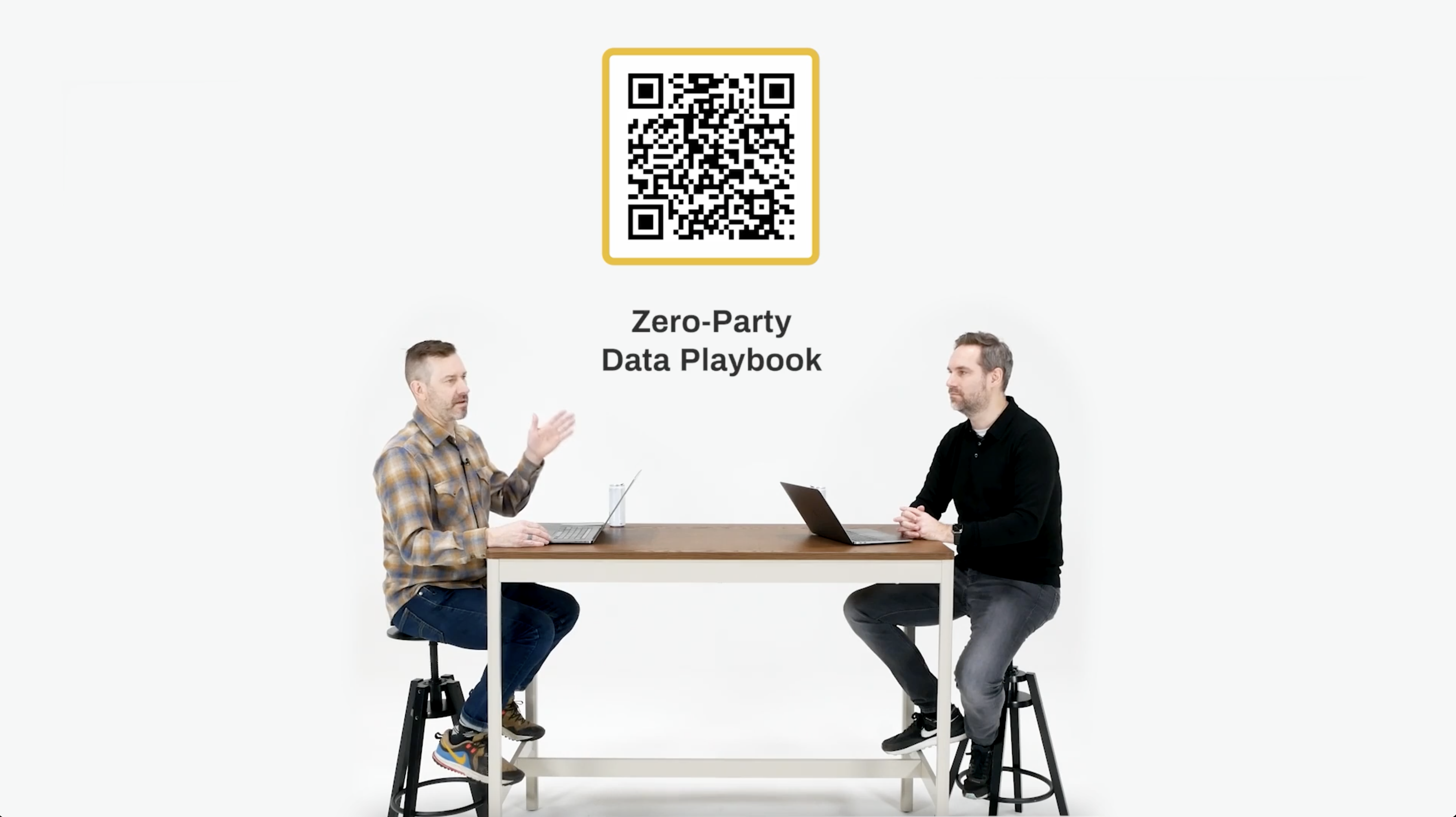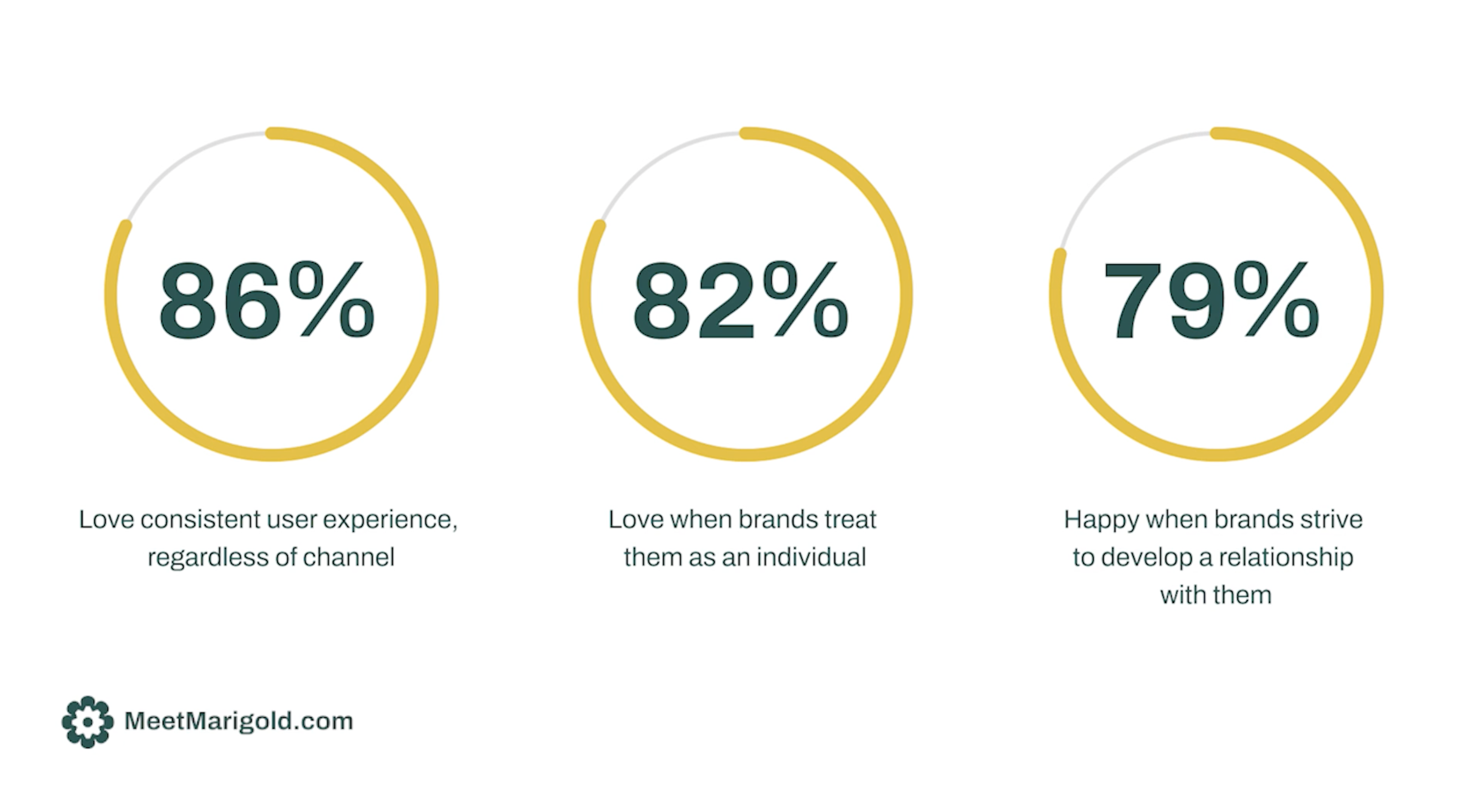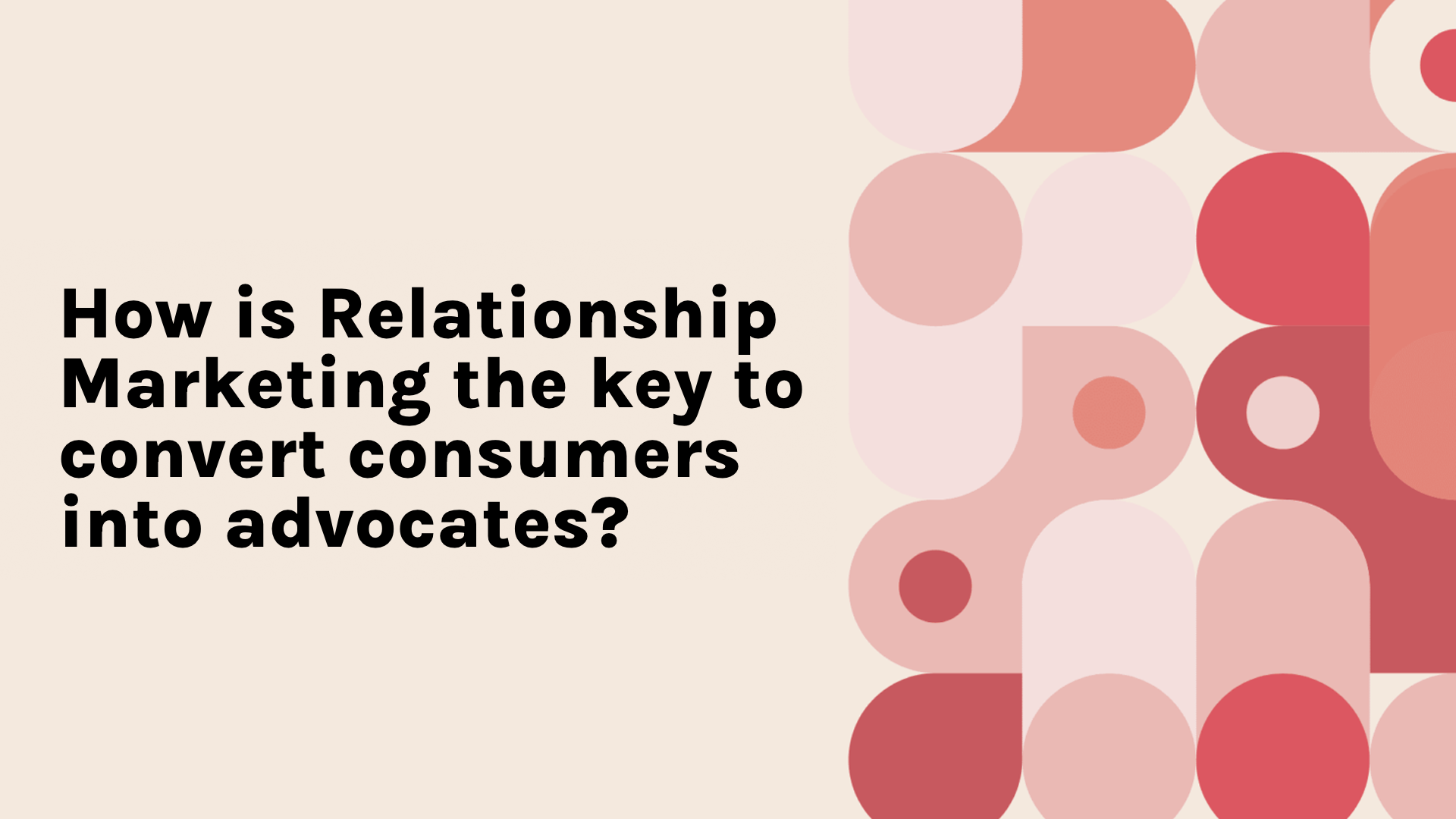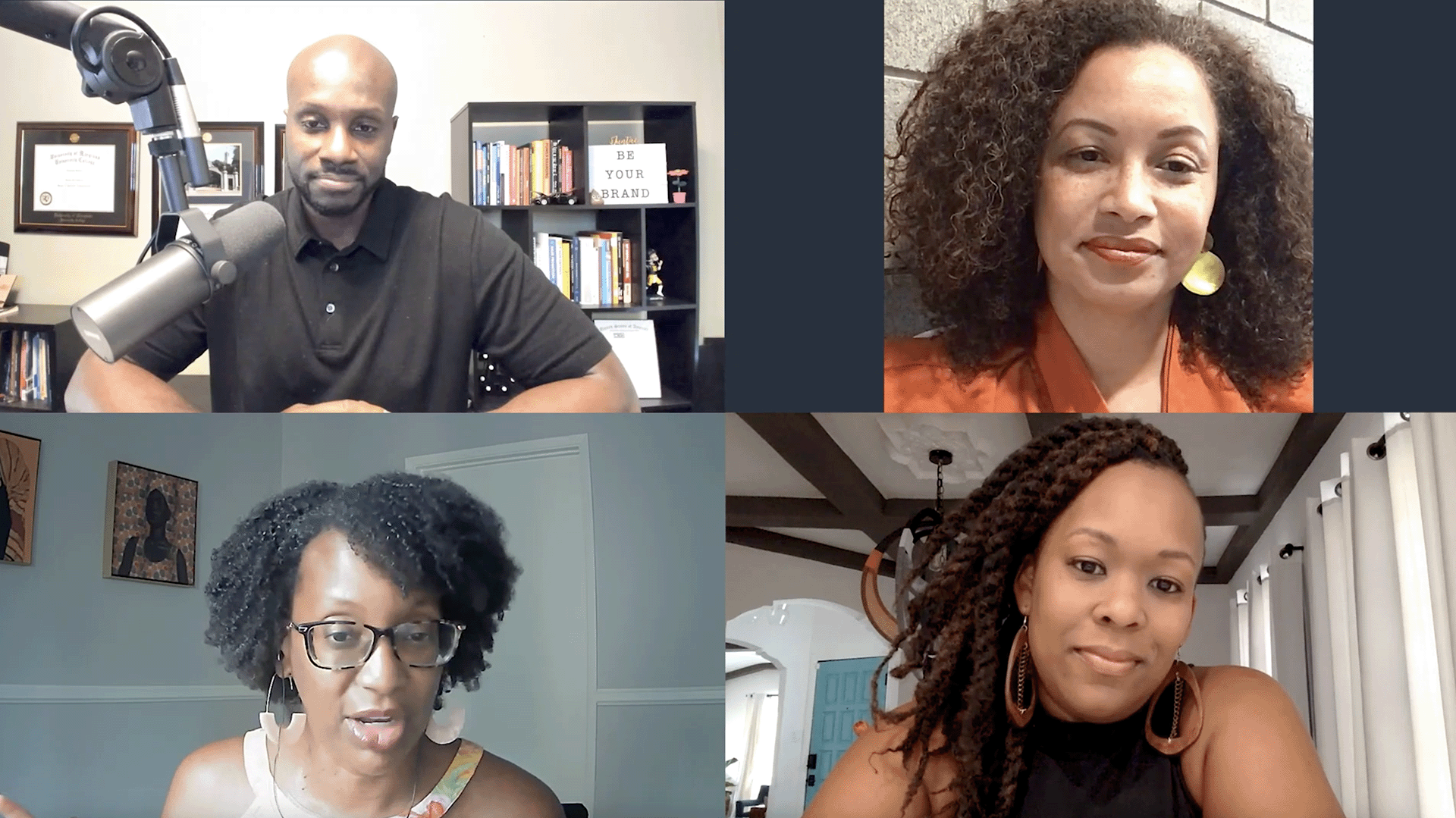The ROI on Relationship Marketing: An Analyst POV
- 0.5
- 1
- 1.25
- 1.5
- 1.75
- 2
Tim Glomb: Today's marketer needs to move fast, and they need technology that can keep up with increasing consumer demand for personalized experiences. Today, I am in the heart of marketing technology here in Silicon Valley, California. In fact, I'm in front of the Apple Park Visitor Center, but my ultimate destination is the home of Ray Wang. He is the founder of Constellation Research, who recently issued a paper titled" Relationship Marketing at the Speed of Value". Now, this study shows the ROI and impact when investing in Cheetah Digital's Customer Engagement Platform. In fact, the findings show that we accelerate profitable customer loyalty while delivering personalized experiences at scale. So let's go talk to him about everything relationship marketing and what they found in their study. Let's do this. Well, Ray, I appreciate you having me here at your home. I'm excited to talk to you. How are you doing today?
Ray Wang: It's amazing. I can't believe we were out of a pandemic, people were super excited, and then, boom, all these new things are happening.
Tim Glomb: It's nonstop. Well, today we're going to talk about this great report that Constellation Research did on behalf of the Cheetah Customer Engagement Platform, but first, just explain your role and what Constellation Research is all about, for those who may not know.
Ray Wang: So Constellation Research started in 2010. We wanted to focus on digital transformation. It was 2010, people laughed at us. They're like, " What the heck you're talking about? We're not even in the cloud." And so we started by trying to figure out what businesses were going to be successful, what business models were going to be there, and we actually broke out big themes; customer experience, matrix commerce, future of work, technology optimization, data decisions, and these were all topics that were business topics, and then we figured the technologies would come, and that's really how we're organized. And so our research firm here based in Silicon Valley, the idea is really to be able to focus on horizon 2, horizon 3, where the future is, but not something that's so far out of reach. So something that's 18 to 24 months out and 24 to about 36 months, that's where we focus most of our research.
Tim Glomb: Got it, so cutting edge, not bleeding edge, not too far off the edge. And for those who are watching, they might be familiar with total economic impact studies, things of that nature and the nature of the report that you did for us, but why don't you explain the value? Why would a marketer who's looking to invest in technology for the future, why would they want to read a paper like you produced for us?
Ray Wang: So when you think about economic studies or ROI studies, they typically go through a comprehensive methodology, try to figure exactly where the future opportunities are going to be, and those are great. I worked on those in the past, in a former life, I actually built some of the methodology as well, I know how they work, but today, you're a marketer, you want stories fast and quick. Which one of your friends, which of your peers are using something and did they get immediate results? And that's what people are looking for. So when you see something and you look at the methodology of this paper, it's really about what was the problem? Why did it happen? That could be me. What did they do? And what kind of opportunities are out there? And that's really what we wanted to do in a very concise manner.
Tim Glomb: Well, you did a great job on the report and everybody watching here is going to get a complimentary copy of it. So why don't we dig into it? Why don't you set up the scene. What did you do for us in our customer engagement platform and how'd you evaluate it?
Ray Wang: Well, I think the important thing is really this notion of where relationship marketing is going. Everybody is dealing with a cookie apocalypse. Everybody's dealing with a situation where there's more regulatory requirements. Hey, was that personal data being used here? You can't use that data. This cookie can't here. Your site information doesn't make sense. This data residency is going to be a big problem. So because of that, we actually in a situation where we actually have to change the way we look at marketing. And what was interesting about the paper is there are two different industries that we're looking for. One was something in the sporting industry and retail, and the other one's actually in the pet supply business. And that itself was very different in the nuance. But they all have similar problems, just like everybody who's potentially watching this, right? The things and the tools and the marketing techniques that we've been trying, they're no longer effective, they're not working. And that's really what our analyst, Liz Miller was trying to capture. She's trying to understand why it wasn't working, how come it didn't succeed, and what new technologies can actually change those dynamics and the balance of now building relationships instead of just an engagement. Like our old definition of engagement, it was, " Hey, did you actually respond?" No, we really want to get to a point where mass personalization has scales in place and relationships are being coveted.
Tim Glomb: You're absolutely right. Before we started this session, we were talking about travel and vacation. What do you like to do? You prefer to go to Hawaii and hang out with your kids and this and that. It really is that human connection. It's bringing human connection into a marketing landscape. If you met somebody on the street and they said they're a vegetarian, you're probably not going to invite them to your barbecue your carnivore event. So that is a challenge. How do you do it at scale? And you mentioned the cookies, right? As technologists and marketers, which I was a brand marketer before I joined this firm, we got fat and lazy on cookies. We let creative go to the side, we let relationships dwindle. So these are common challenges, I don't care which industry. How did you go about the research and what did you find? Just take me down the paper of what the results were.
Ray Wang: Well, I think the really important piece was really you're sending emails and nobody's responding. Why is that? Right? Well, first thing is, you've got to be contextually relevant. If you're not relevant, nobody cares, and so you've got to figure out context attribution. Sometimes it's time, sometimes it's location. What product did you buy? What part of the business process where you in? And those are important cues. And so you're going out and you're trying to build an email marketing campaign that is just a big blast, no one's going to pay attention. It's the worst thing you could possibly do. And that's one of the things that you have to think about. And so how do we learn more about what people are doing? How do we have them opt in on preferences that they care about? How do you personalize those experiences so that they only see the things they need to be? A lot of people have been talking about real time over the last week. It's not about real time. It's about being right time, being contextually relevant, real time's a stream of crap. And I don't want to stream of crap. You don't want to stream of crap. And that's really what's important.
Tim Glomb: Now, it's totally true. There's has to be a listening phase. And relationship marketing is all about that, right? Number one, the first stage of relationship marketing, we identify is acquisition and not just, " Oh, we got an email, we got some demographic data." It's" would you rather go to the beach or the mountains?" Understanding people as an individual. And that's crucial. That's the critical first step in relationship marketing. You also mentioned a few things there about noise. In our recent consumer trends index, which we've done for three years now. It keeps going. Hockey sticks up. Nearly three quarters of global participants in that 5, 000 person survey said they're getting irrelevant offers and content from brands and it's annoying. It will turn off the effectiveness of your email, et cetera. So I'd love to hear you if we're on the same page about that. What else did we find as far as efficiencies? When you have a single platform where all of this information that you're collecting from consumers can live and be activated.
Ray Wang: Let's take your example of the barbecue, right? You're coming to my carnivore event and I discover that you're a vegan and I discover that someone else is also allergic to something else and someone else is also not able to actually handle peanuts, for example. That shouldn't be looked as a missed opportunity. In fact, I'm going to invite you, and now that I know that, I'm going to make sure something's available to you. That's the contextually relevant piece. So now I might have something that is an impossible burger. I might actually have some vegan food here. Turns out that you're allergic to peanuts and other things, I'll make sure things aren't gluten free. That's what we want to be able to get to. That's how you build the relationship. And that's the first part in terms of what you're talking about in acquisition. And in this case for the sporting equipment manufacturer, to suddenly go from really, really bad response rates to 191% improvement in open rates, that is huge, right?
Tim Glomb: Yes.
Ray Wang: Just think about that, a 191% improvement. Now, if you think about your email opening rates, you're never going to see anything like that unless you have a relationship because it's just going straight to the trash and spam bin. And more likely people are just deleting it as soon as they see it. But when you have a compelling offer and a compelling statement about what you're about to bring them and they're like, " Oh, I was just thinking about that," now it opens up a lot of possibilities.
Tim Glomb: Yes. That's the just in time, right time marketing. I was very familiar with the brand that you researched here, and I love lifts, but based on percentage, right? 191%. But if it was a trash number to begin with. So I'll reveal they had over 70% open rates when they personalized subject line, not just a first name, but literally an attribute of the product they were selling. So let's say they were selling socks, they would say they were soft or they were comfortable, or they help you with sweat, whatever it might be. Using that attribute in the subject line, got them over 70% open rates to hundreds of thousands. And back to your point of blasting." Marketers I think, tend to get in this realm of, I have a new product or we have a new feature, or I've got a lot of inventory. I need to blast everyone to get an action, get a result, drive some revenue, end of quarter, whatever it might be." Everyone listening, you know what I'm talking about. But finding the right people with the right message. Not everybody wants the message you want to send as a marketer today. They might need it next week or next month. So patience, listen to the data and personalize.
Ray Wang: We're going from" spray and pray" to really" nurture, grow, and really land and expand." And that's really what you want to, Once you get my trust and once you earn my trust, I'm willing to spend more time with you. And part of earning that trust is not wasting my time.
Tim Glomb: Totally agree. It's the same way you would manage relationships with people. If you have new coworkers or people reporting to you, you want to nurture them. You want to build that relationship, do that at scale with millions of consumers. Okay. Some other things you've found in this report, which were benefits of the Cheetah Digital Customer Engagement Platform was a savings in time. These companies do not have massive marketing departments with unlimited resources. They have small, nimble, but very efficient marketing departments. There was a savings in time. Can you talk about the efficiencies that you found in our platform?
Ray Wang: Let's go back to your point. Having everything in one platform means you're not spending time integrating. You're not spending time calling a vendor. You're not spending time trying to figure out why this thing doesn't work. Pulling all the information from 14 different systems like tag management system, " Wait, that's not working." " My content management system, I can't bring that data in." " Wait, the analytics that are coming out of whatever social media platform, that's a mess." And what you want to be able to do is actually centralize as much of that information on that platform. Now, most companies don't have really big marketing budgets or big marketing teams. And the question is, how do you get enterprise class marketing at the SMB scale? And that's the question everybody wants to ask. Well, in this case, I believe it was a pet company, right? Because I can't say too much, but it's a pet supply company. And what they were able to do is bring 20% savings in time, right? 20% savings in time, depending how big your team is could be like five more people. You could have five more people working for you, or two more people working for you, doing the things that matter. And that's why this is important.
Tim Glomb: Yeah, it is. The single source of truth, et cetera. Also, I'm sure many are watching. In 2019, before I joined Cheetah Digital, I signed over 30 SaaS agreements for my clients from marketing capacity. And I understand the house of cards mentality, your marketing stack. We've always said marketing stack because it was just that. They were stacked on top of each other. And to your point, when your CDP has to talk to your engagement platform, has to talk to your ESP, has to talk to your mobile, you've got all these failure points in a chain. When you have that single source and everything in one area. A, you've got native actions. So as you bring in real time or batch data, you can also automate or have a business set of rules or journey orchestration. Somebody can get an email, a transactional, they can get an SMS message, you can do everything when it's in one platform. And that's why we built the customer engagement platform. So we're glad that you pulled that out of that client, 20% savings.
Ray Wang: Well, I think the important thing to understand here is in the digital world, what we're seeing is every customer decision that's made, that's a demand signal. And when you have that type of demand signal, that means every choice is an AB test. You have the location, the time, you might even have the heart rate, you might even know if they were happy or not based on the tone of the voice. And what you want to do is take that and then learn from it. Because as you learn from it, then you can figure a set of next best actions. Do not contact, continue to nurture. No, maybe we actually want to send them another email. Send them an offer, use that offer. What do they respond to the offer? How did they respond the offer? How did the segment respond to the offer? And that's what we're trying to get to. And this is the heart of relationship marketing. It's the ability to get to the next best action and the ability to actually contextually be relevant in every single interaction. So you're not wasting your customer's time or even your team's time.
Tim Glomb: I love it. I love it. Everyone's going to get the reports so you can dig in to see the actual numbers and stats.
Ray Wang: Yeah, I don't want to reel too much.
Tim Glomb: Yeah, yeah. All right. Fair enough. And it's a great report, but towards the end you have some takeaways and some recommended actions. One of that is value exchange. Use a value exchange, a give to get kind of mentality. You need data, you need clean data, and I'm not talking data you can buy or broker or infer. That may be important to a certain extent. But when you can get truly self- declared information, zero party data from an actual customer, things that are in their heads, psychographics, it's incredibly important. How important do you feel a value exchange is in that relationship building with customers?
Ray Wang: You have to build that at first. And the question is, how much do to give away? And what do you give out? And you start with the things that really matter to them. Can you save them on price? Can you save them on time? Can you give them an offer that they couldn't see before? Is there a problem they're trying to solve that you can solve immediately? You want those things out there to start building trust. And that's really part of how your authentic brand might be or your authentic brand values are going to be. And you have to reflect that not only in the physical world, but especially in the digital world because people are looking for that. And so that is part of the brand experience, making sure that you design those feedback loops that are there so they're automatic. And of course that's your give- get in the value
Tim Glomb: Exchange. And it's interesting, again, in that Consumer Trends Index report, I believe over 70% of respondents said they would simply like the chance to win or participate in a sweepstakes in exchange for some of their psychographic information. Also, coupons and discounts. You don't want to water down your brand, but that's always a key driver of action. There's a million different ways. So you should also get the Consumer Trends Index where you can understand. What are some of our other takeaways here on the report and things that marketers, whether they read the report or not, what should they be thinking about? What should they be planning for? What should they be putting in place for the future?
Ray Wang: Yeah, one of the important things that Liz determined and the rest of Constellation Research really believes is we're going to operationalize this customer obsession. And what you have to start by doing is you've got to ask lots of questions, you've got to listen really hard, you got to repeat that process. But more importantly, this is not about loyalty. What you really want to do is build advocacy. One of the things that we think are really important as part of relationship marketing is activating a movement. If you can activate a movement and get customers become your advocates, that's better than any loyalty program. It's not about the discounts. At some point it's not about a dollar discount or 10% rewards, it's about being part of a bigger movement. And that's really where relationship marketing comes. And then the big piece is you've got to continue to invest and continue to repeat in that process because it's not a one time thing. Customers are fickle. They're trading loyalty for convenience, loyalty for value, loyalty for availability, loyalty for status. They're just not loyal and that's why relationship marketing is important. And that's why you have to focus on the advocacy aspect.
Tim Glomb: I think you found in this report, one of the brands saved, with the activation of the customer engagement platform, 52% reduction in marketing spend over three years. That is a huge reduction. And I happen to know that they increased sales, I can't share the number, but it's millions of dollars. So an increase in sales, a decrease in marketing costs. That's what a single platform and an intelligence platform can get you.
Ray Wang: But I want to remind the audience, if you want to be high growth, you still want to spend 11 to 13% of your revenues on marketing. Otherwise you're not going to keep that high growth. Once you drop that, you're in trouble. But you can use accelerators, for example, what you're doing on the relationship marketing side to be able to be successful.
Tim Glomb: Absolutely. And R& D is a big one too. And when you're getting that zero party data, you can start to understand what people care about in your product, and that can actually inform your product marketing and your product roadmap. So I don't care if that's a service based or a physical product base.
Ray Wang: Oh, here's the more important thing. Forget NPS scores, right? You don't need that in this kind of model.
Tim Glomb: And look, it's one thing to go out and do market research and have a firm come to you and say, " you need to do X, Y, and Z." It's another thing to ask your customers and your consumers. The one company that's in this, over 60% of their database are people that don't own their product, they own a competing brand. Yes, That's in, that's the holy grail to have them in your marketing database. So anyway, there's tons in the report. Go look at it. Ray, this has been great. What do we want to close with here? Do we have any thoughts for the future or predictions or advice?
Ray Wang: Yeah, the most important thing is as you get into digital marketing and you start looking at relationship marketing, you want to start there. The shift that's going on right now is not a business model shift, it's really competition for digital monetization. And how you actually monetize is going to be tied very closely to what type of relationships you build. There's six ways to monetize: ads, goods, search, services, membership and subscriptions. They all require the nurturing that's important in relationship marketing.
Tim Glomb: Couldn't agree more. And look, it's timely. It's October, 2022. Some would say we're going into an impending recession. We're already seeing ad dollars drop, et cetera. So now's the time to start building those relationships. Look, we have a ton of resources. Read the paper. They do great work at Constellation Research. Call them, lean on them, reach out to them if you have other MarTech needs. And then we have a ton of information on relationship marketing, the relationship marketing ebook. We have multiple use cases that all of you will relate to and the problems and headaches you have. Ray, I appreciate you taking the time. I appreciate the report and we look forward to the other research you guys are pumping out there.
Ray Wang: Hey, thanks a lot.
Tim Glomb: All right.
DESCRIPTION
Investing in a relationship marketing solution can provide a world of value, including a decrease in marketing spend, an increase in labor efficiency as well as a positive impact to top line revenue.
Constellation Research is a Silicon Valley research firm that evaluates marketing technology and the impact on the brands that are focused on relationship marketing solutions.
Join Ray Wang, CEO of Constellation Research and Tim Glomb from CM Group to learn:
Takeaways:
- Why brands focused on prioritizing relationships will win the day
- How agile technology allows you to meet the customer where they are
- Actual stats and lift in revenue figures derived from a relationship marketing approach
Today's Guests

Ray Wang



